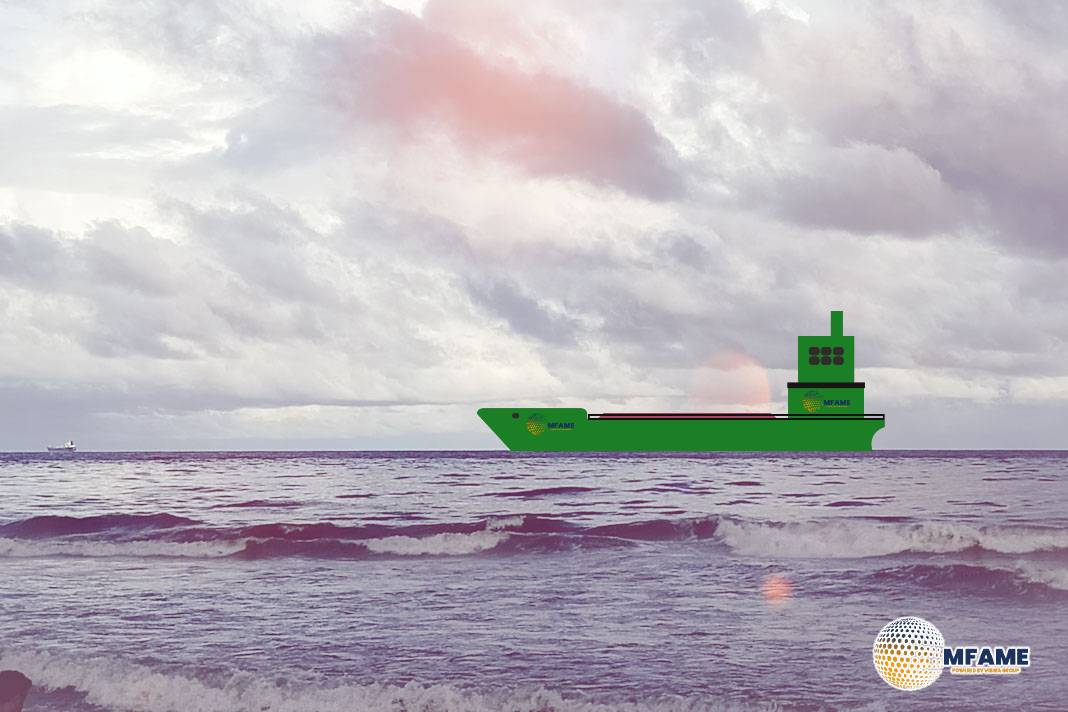- The InfraLaser system was tested on a vessel’s hull in December 2024.
- The system aims to replace sandblasting, reducing environmental impact.
- The trial showed the effectiveness of laser technology for rust and paint removal.
Mitsui O.S.K. Lines, Ltd. (MOL), MOL Drybulk Ltd., Furukawa Electric Co., Ltd., and TSUNEISHI SHIPBUILDING Co., Ltd. completed a field trial of the InfraLaser system on the ship’s outer hull in December 2024. It is an important milestone in developing a rust and coating removal system for maintenance at sea, reports MOL.
Background: The Need for an Innovative Solution
In ship repairs, rust and coatings are conventionally removed through sandblasting techniques that produce waste materials and debris to be recovered. In a bid to mitigate this challenge, Furukawa Electric, in association with MOL and MOL Drybulk, has been constructing a laser-based rust and coating removal system known as “InfraLaser.” The system vows to minimize environmental impact by reducing waste, dust, and noise while improving occupational health and safety.
MOL and MOL Drybulk have been behind this innovation, seeing its possibilities for ship repairs as well as their sustainability thrust. Furthermore, MOL Group and TSUNEISHI SHIPBUILDING set talks to design and develop a laser blasting system for ship maintenance and repairs that is more eco-friendly.
Details: Progress in Laser Technology for Ship Maintenance
Furukawa Electric has applied its technical expertise in industrial laser technology to maximize the use of laser irradiation for removing rust and paint from the hulls of ships. The field trial on a ship owned and operated by MOL proved the efficiency of the system. TSUNEISHI SHIPBUILDING gave constructive feedback for use in shipbuilding and repair, while MOL and MOL Drybulk offered input as shipping operators.
This partnership will be used to enhance the “InfraLaser” system to meet actual ship maintenance requirements. In the future, the firms plan to develop further an automated laser application system to replace traditional sandblasting techniques, lowering labor and increasing efficiency in ship maintenance and repair.
MOL Group’s Sustainability Management
MOL Group is dedicated to the sustainable development of the company and society through long-term plans. Their vision centers on building up a range of social infrastructure businesses, alongside conventional shipping, to meet changing social needs, such as the conservation of the environment.
As part of its sustainability objectives, MOL is actively engaged in the “BLUE ACTION 2035” Group management plan and the “Environmental Vision 2.2.” These activities complement their corporate philosophies and are intended to maximize value provided to stakeholders while tackling the most important sustainability challenges.
Furukawa Electric Group’s Approach to the SDGs
Furukawa Electric Group is committed to supporting the United Nations’ Sustainable Development Goals (SDGs) under its Vision 2030. The objective of the group is to establish a social infrastructure that connects information, energy, and mobility to protect the world’s environment and enhance the quality of life.
Furukawa Electric Group is devoted to ESG management, with innovation and flexibility to maximize corporate value and help achieve the SDGs in the long term.
TSUNEISHI SHIPBUILDING’s Strategy towards the SDGs
TSUNEISHI SHIPBUILDING is positively deploying ESG and SDG policies regarding environmental conservation, workplace well-being, and contribution in the areas of technology. Following its adherence to sustainability, the company has engaged in environmentally friendly vessels and services as it works toward creating a sustainable world.
SDG activities underscore “Ingenuity for Global Environmental Conservation,” given the high involvement that they have in the sea business.
Did you subscribe to our daily Newsletter?
It’s Free Click here to Subscribe!
Source: MOL
















